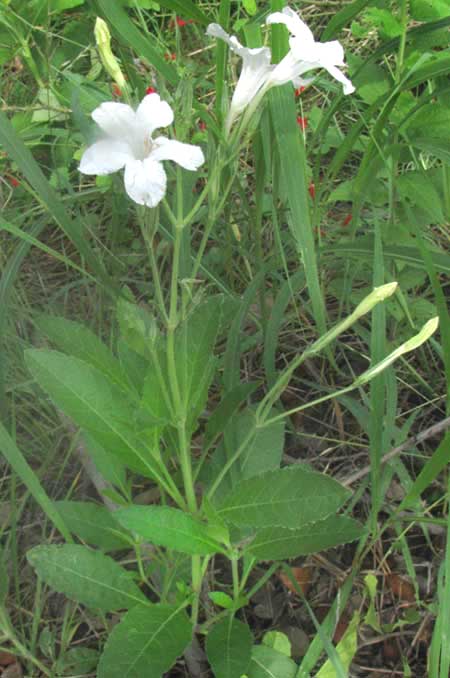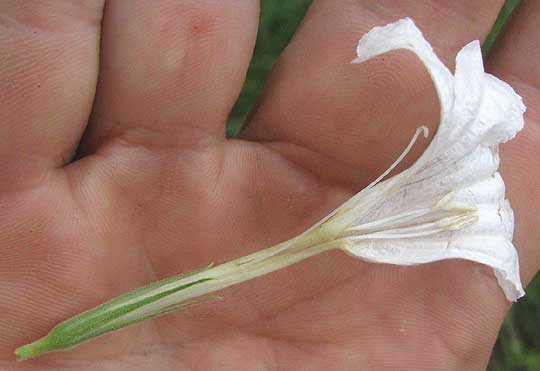Excerpts from Jim Conrad's
Naturalist Newsletter
from the June 23, 2013 Newsletter issued from the Frio Canyon Nature Education Center in the valley of the Dry Frio River in northern Uvalde County, southwestern Texas, on the southern border of the Edwards Plateau; elevation ~1750m (~5750 ft); N29.62°, W99.86°; USA
WILD WHITE PETUNIA
Yet another wildflower whose pale or white blossoms display grandly bobbing about in breezes sweeping across grassy fields as well as on limestone outcrops, gravel, and in thickets and open woods is the one shown below with its 2-3/8ths-inch long (6cm) flowers with slightly down-curving corolla tubes:

The flowers' distinctive size, shape, and the fact that each blossom is subtended by a leafy, scale-like "bract" sent me looking to see if in this part of Texas we had any wild petunia species (genus Ruellia) -- despite the fact that other wild petunias I've seen produced purplish flowers. And, by golly, such a plant was listed: the "Wild White Petunia," RUELLIA METZIAE, also known as Metz's Wild Petunia.
Garden petunias, genus Petunia, are members of the Nightshade/Tomato/Potato Family, but these wild petunias in the genus Ruellia belong to the mostly tropical Acanthus Family. Garden petunias bear five stamens and lack conspicuous bracts below each flower, while wild petunias have four stamens and do have bracts. You can see a longitudinal section of a Wild White Petunia's blossom below:

Notice how the corolla forms a slender tube at its base, then about 2/3rds of the length up the tube abruptly expands, then at the mouth of the tube the corolla lobes flare outward. It's also typical that the filaments of the flowers' four stamen are paired and more or less connected at their bases, and that the slender style -- in the picture leaning from the corolla and seen a little above it -- distinctly curves at its stigmatic tip.
Though Wild White Petunia is common here, it's endemic just to a bit of arid northeastern Mexico and Texas. In Texas it's centered on the Edwards Plateau of the southwestern part of the state.